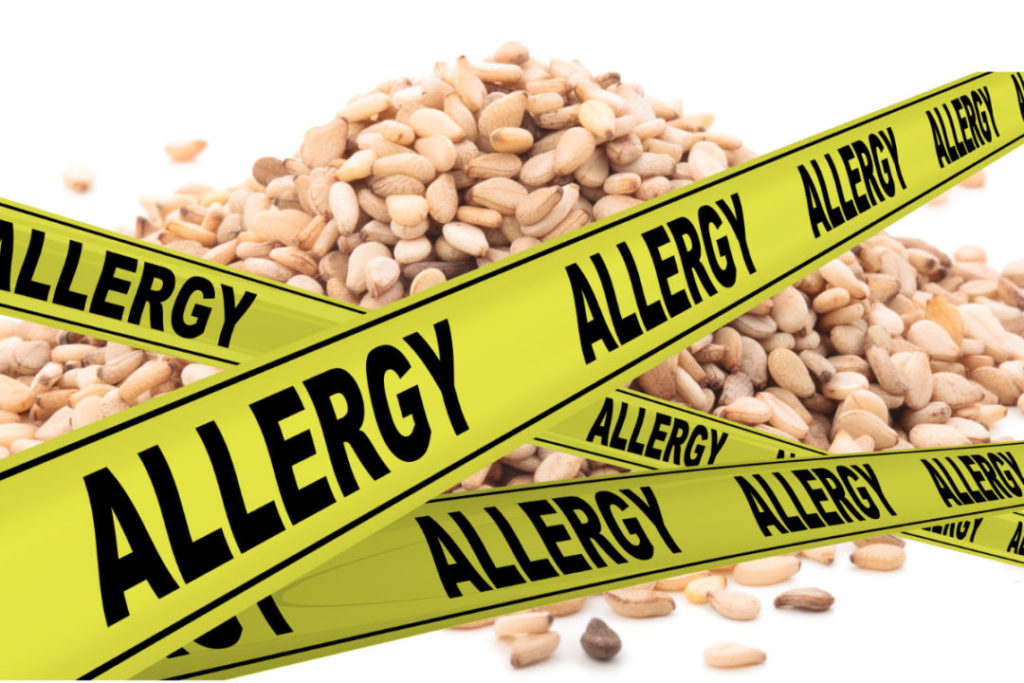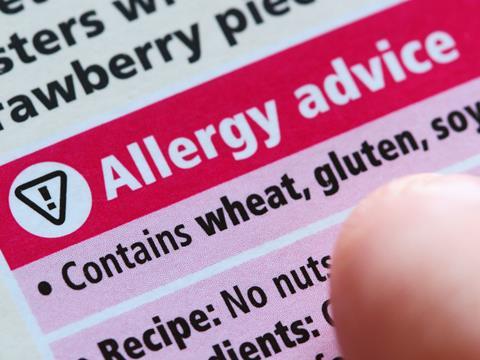Allergic reaction to certain foods occurs when the immune system reacts to a certain protein present in the food. The symptoms of food allergy can range from mild symptoms involving hives and lip swelling to severe, life-threatening symptoms, often called anaphylaxis, that may involve fatal respiratory problems and shock.
In the US, until recently, the Food Allergen Labeling and Consumer Protection Act of 2004 (FALCPA) had identified eight foods as major food allergens that can cause allergic reactions. These were milk, eggs, fish shellfish, tree nuts, peanuts, wheat, and soybean.

Lately many Americans were found to have either sesame allergy or sensitivity. Keeping in mind the severity of food allergies caused by sesame, the US has declared sesame as the ninth major allergen.This has been a widely expected move, as FDA had started looking at the prevalence and severity of sesame allergy from the year 2018. In November 2020, to help consumers who are allergic or sensitive to sesame, FDA published a draft guidelines , asking manufacturers to voluntarily disclose sesame in the ingredient list of food labels.
On April 23, 2021, the FASTER Act was signed into law, in which President Joe Biden signed a legislation making it mandatory to declare sesame as a food allergen. This has made sesame the ninth major allergen. European Union, Australia and New Zealand, and Canada already require packaged foods to prominently label sesame as a potential allergen.
All products that contain sesame seeds or its derivatives will have to be explicitly labeled after Jan. 1, 2023. Food manufacturers should ensure that sesame is included in the ingredient list as well as declared as an allergen.
However there are few exceptions for not declaring sesame on the labels. One such exception is when sesame is used as a ‘flavor’ or ‘spice.’ Another exception is when sesame is not in the common or usual name of a food (e.g., tahini, which is made from sesame seeds). Tahini is made by grinding sesame into a paste and also does not require labelling.
Consumers should read the labels to make sure that they don’t consume foods which are allergic to them. According to FALCPA, the label declaration should contain the name of the allergen, in parentheses following the name of the ingredient. For examples: White sesame seeds (sesame) or immediately after or next to the list of ingredients in a “contains” statement. For example: Contains Sesame. A “May Contain” statement is also required on the label, if sesame is handled on the site.
However care should be taken as sesame can be present in the product in the form of hidden ingredient and might fall under “spices” or “natural flavorings”, hence manufacturers are encouraged to identify and voluntarily disclose all ingredients that contain sesame on the labels to help their consumers easily identify the ingredients and make healthy choices.

Author: Meera V. is a Food Technologist and goes to quite an extent to tell the food businesses what they can do to improve the food safety and hygiene. She is a Senior Associate Consultant at Food Safety Works and regularly audits food businesses to check on their compliance and also plays a crucial role in regulatory and compliance team.






